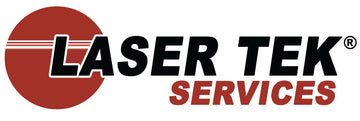Two to three decades ago, photography was dependent on films and the hard copies were processed in selected laboratories. However, thanks to Kodak’s digital imaging invention in 1975, our perception of photography has entirely changed today. With the coming of the digital camera into our midst, digital photography printing followed due to the proliferation of digital printers in the market laser printers with their cartridges and toner refill kits, inkjets and their inkjet cartridges.
What is digital photography? The heart of the technology is the digital camera (much like the old cameras stashed in our closets) that captures the images. Instead of a photographic film, the captured images are sent to storage devices inside the camera. What makes it better than the previous type is that the images are duplicated and previewed on the camera’s monitor. Therefore, snap shots can never go wrong because if the captured images do not look satisfactory, the user can simply delete the image and shoot for new images.
What is digital photography printing? Captured digital images is fed by the digital camera to PC where the captured images are viewed on the monitor for possible adjustments in terms of lighting, shadows, and even color tones. Once the previewed images has undergone a makeover and is now deemed satisfactory, it is then sent to the printer; whether a laser toner cartridge fully loaded with toner or an inkjet with its accompanying inkjet cartridges. The computer processes the images and turns them into a raster image of dots that is compatible with the printer’s settings.
What makes digital photography printing different from the traditional method? Traditional printing methods such as lithography, flexography, gravure, or letterpress are an entirely different field from that of digital printing. The traditional methods use printing plates while digital printing makes use of digital data streamed from the computer and fed to the printer that load on laser cartridges or ink cartridges for inkjets during printing runs. In the absence of printing plates, digital printing often results in a much faster turnaround (document printing) and is less expensive to operate.
Is digital photography printing better than the old or traditional system? Definitely! In terms of convenience, digital images can now be printed inhouse, whether at home or at the office. All that is required is a high-resolution monitor that would be able to capture pertinent conditions efficiently when the images were taken. Likewise, the digital printer should also be calibrated to be able to produce the tones and hues displayed on the monitor in the printed output.
Moreover, users are supplied with consummable options that would significantly reduce the costs of photo printing, particularly when done inhouse. These include the toner refill kits loaded into the laser printer cartridge or compatible inkjet cartridges if the photo printer is an inkjet.
The majority of photographs printed is an offshoot of the popularity of digital photography printing. This is a technology that is distinct and has totally reinvented our perception of photo printing.





